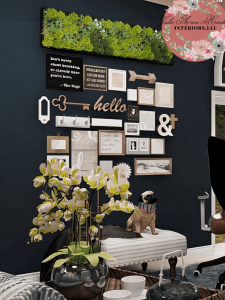Artisan enclave murals bring vibrant colors and breathtaking designs to public and private spaces, transforming them into captivating environments. However, the beauty and longevity of these artworks heavily depend on the adhesives used to affix them to surfaces. Adhesive failures can lead to peeling, bubbling, or complete detachment of the mural, detracting from its visual appeal and reducing its lifespan. This article explores strategies for avoiding and fixing adhesive failures, ensuring that these artistic creations endure over time.
Understanding Different Types of Adhesive Failures
Before diving into prevention and repair strategies, it’s crucial to understand the types of adhesive failures that can affect murals.
- Cohesive failure: This occurs when the adhesive itself breaks apart, while its bond to the mural and the wall remains intact.
- Adhesive failure: This type of failure happens wh i loved this en the adhesive does not properly bond to the mural or the wall, leading to detachment.
- Substrate failure: In this case, the material of the wall or the mural itself fails, affecting the adhesive bond.
- Thin-film cohesive failure: This occurs when the adhesive layer is too thin to maintain its strength, leading to failure.
Preparing Surfaces for Mural Installation
Proper surface preparation is key to avoiding adhesive failures. Here are steps to ensure surfaces are ready for mural installation:
- Clean the surface: Remove all dirt, grease, and other contaminants that could prevent the adhesive from bonding properly.
- Prime the surface: Apply a primer to enhance the adhesive’s ability to bond with the surface.
- Treat low surface energy substrates: Some materials, like certain plastics, have low surface energy, making it difficult for adhesives to bond. Special treatments or adhesives may be required for these surfaces.
Selecting the Right Adhesive for Artisan Enclave Murals
Choosing the correct adhesive is crucial for the success of a mural installation. Consider the following factors:
-
- Mural materials: Different adhesives work better with different materials. Ensure the adhesive is compatible with the mural’s material.
- Environmental conditions: Adhesives vary in their resistance to temperature changes, humidity, and UV exposure. Select an adhesive that can withstand the mural’s environment.
- Surface type: The type of surface the mural will be attached to can dictate the choice of adhesive. Some adhesives are designed specifically for rough, porous, or smooth surfaces.
Table 1: Recommended Adhesives Based on Mural Materials and Conditions

| Mural Material | Environmental Condition | Recommended Adhesive |
|---|---|---|
| Canvas | High humidity | Acrylic-based |
| Metal | Outdoor exposure | Epoxy-based |
| Glass | Indoor, controlled climate | Silicone-based |
Application Techniques to Avoid Adhesive Failures
Applying adhesive correctly is as important as selecting the right type. Follow these best practices:
- Apply evenly: Ensure the adhesive is spread evenly across the surface to avoid weak spots.
- Avoid common mistakes: Do not apply too much or too little adhesive, and avoid contaminating the adhesive with dirt or oil from your hands.
- Optimal bond line thickness: Aim for the manufacturer-recommended bond line thickness, usually between 0.1 to 0.5 millimeters.

I am Nicholas Cremean, your guide and expert in the nuanced world of mural installations. With over a decade of experience in the mural industry, I specialize in bringing artistic visions to life on walls and surfaces of all types.




